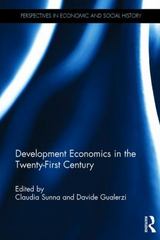Question
3. A monopolist sells output to two geographically separated markets. Arbitrage is not possible. The inverse demand curve in market 1 is given by P1=
3. A monopolist sells output to two geographically separated markets. Arbitrage is not possible. The inverse demand curve in market 1 is given by P1= 100 - 2Q1 and in market 2, it is P2 = 50 - 2Q2. The marginal cost of production is zero.
a. Find the price charged and the quantities sold in each separate market
b. Find the profits of the firm.
c. Find the consumer surplus.
d. Assume a new law prohibits price discrimination and requires the monopolist to charge the same price in both markets. Find the price and the quantities sold in each market.
e. Has welfare increased, decreased or remained unchanged relative to part a.?
Step by Step Solution
There are 3 Steps involved in it
Step: 1

Get Instant Access to Expert-Tailored Solutions
See step-by-step solutions with expert insights and AI powered tools for academic success
Step: 2

Step: 3

Ace Your Homework with AI
Get the answers you need in no time with our AI-driven, step-by-step assistance
Get Started


